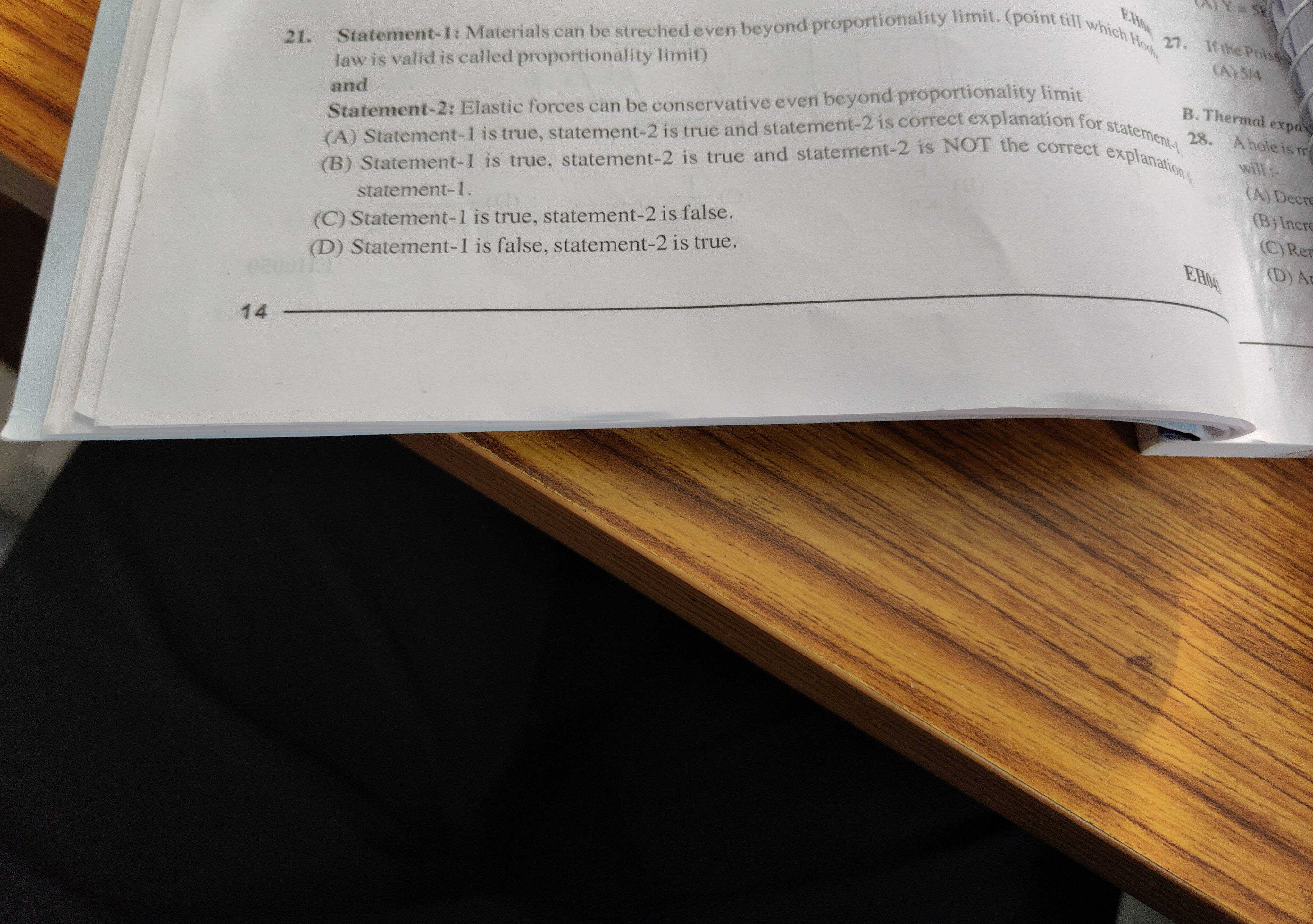Question
Question: Statement-1: Materials can be streched even beyond proportionality limit. (point till which Hooke la...
Statement-1: Materials can be streched even beyond proportionality limit. (point till which Hooke law is valid is called proportionality limit) and Statement-2: Elastic forces can be conservative even beyond proportionality limit

Statement-1 is true, statement-2 is true and statement-2 is correct explanation for statement-1.
Statement-1 is true, statement-2 is true and statement-2 is NOT the correct explanation statement-1.
Statement-1 is true, statement-2 is false.
Statement-1 is false, statement-2 is true.
Statement-1 is true, statement-2 is true and statement-2 is correct explanation for statement-1.
Solution
-
Statement-1 Analysis: Hooke's Law states that stress is directly proportional to strain (Stress∝Strain) only up to a certain point, known as the proportionality limit. Beyond this limit, the stress-strain relationship becomes non-linear, but the material may still behave elastically, meaning it can return to its original shape when the stress is removed. This elastic behavior continues up to the elastic limit. Therefore, materials can indeed be stretched beyond the proportionality limit while still being elastic. Statement-1 is true.
-
Statement-2 Analysis: Elastic forces are forces that tend to restore an object to its original shape after deformation. A force is considered conservative if the work done by it in moving an object between two points is independent of the path taken, or equivalently, the work done over a closed loop is zero. For elastic forces, this means that the potential energy stored in the deformed material depends only on the extent of deformation, not on how that deformation was achieved. This property holds true for all elastic deformations, including those that occur beyond the proportionality limit but before the elastic limit. Therefore, elastic forces are conservative even beyond the proportionality limit. Statement-2 is true.
-
Relationship between Statements: Statement-2 provides the fundamental reason for the behavior described in Statement-1. The ability of a material to be stretched beyond the proportionality limit and still recover its original shape (elasticity) is a direct consequence of the elastic forces within the material being conservative in that region. If these forces were not conservative, the deformation would not be reversible, and permanent deformation would occur. Thus, the conservativeness of elastic forces is why materials can exhibit elastic behavior beyond the proportionality limit.
